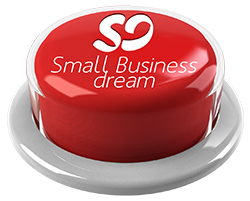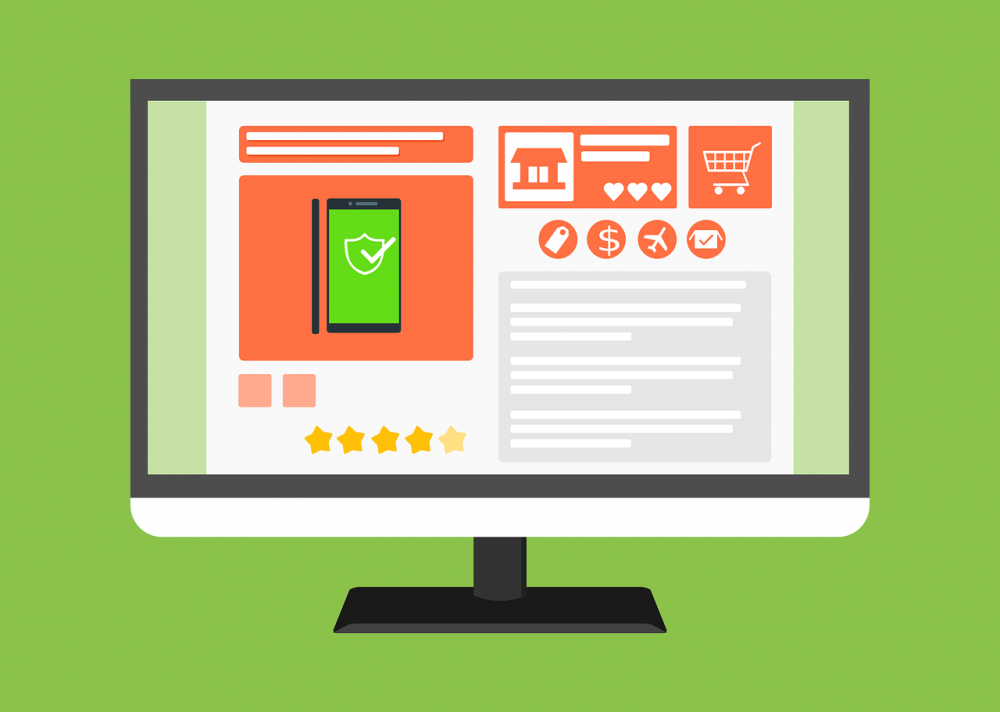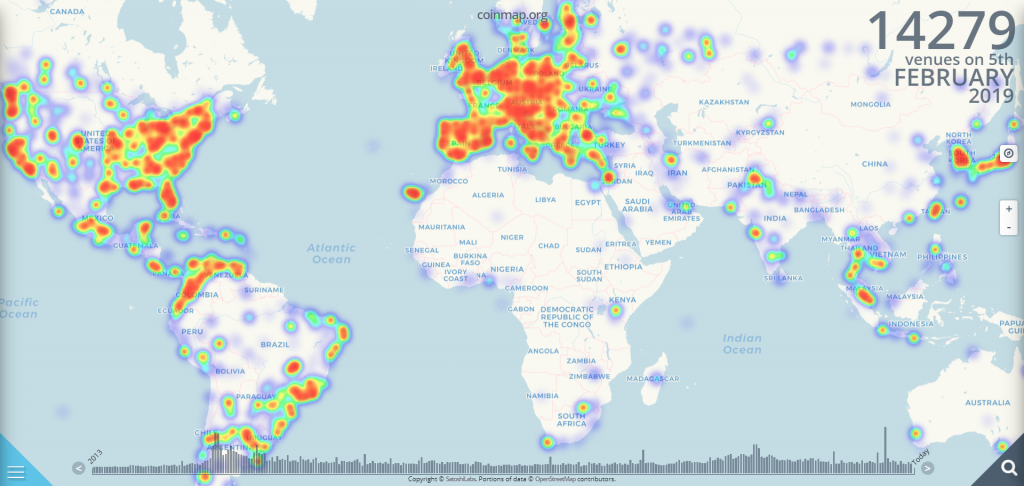Today we are going to talk about that one little thing people don’t like to talk about—business networking events. A lot of people think they’re useless. “Why even bother when we can just do everything online?” That is absolutely correct—if you do not want to succeed in your business.
Truth is, going to networking events can increase your sales very, very rapidly for little or no cost. Should you do them? Yes! Should you do them if you’re a 20-year-old business? Definitely.
Picking a Business Networking Event

Let’s start off with what kind of events you should go to. There are free events and paid for events. Picking an event is more about where would the people you’re looking for be hanging out. Don’t go to an event full of scientists if you sell something that’s not scientific or something that scientists hate. Figure out where your people hang out. Do they hang out at the local Chamber of Commerce events? Do they hang out at free meetups? Where do they hang out?
We’ve been to a lot of networking events—free events, paid events, Chamber of Commerce events, Board of Trade events, inexpensive events, expensive events. In our experience, paid events usually have a higher level of people; people more likely to do business to business type stuff. Free events tend to be more business to customer type people, or businesses that are just starting out with a little bit less money.
So if you’re selling a little bit higher ticket item, a paid event will probably get you a better audience because they’re already people that have been proven to pay for stuff, and because they’re paying for the event. It just usually gives you a different caliber of people. In the B2B, especially, paid events are awesome. In the B2C, they’re also awesome; you just get a little bit different caliber of people. Meetups are great because they’re super-specific. Meetups that cost money would, again, qualify for both.
Do’s and Don’ts of Going to Networking Events
1. Attire

Let’s talk about something really simple—how should you look when you go to a networking event? Basically, you want to look like the person people want to do business with. Sometimes you’re feeling a little bit slow, and you’re not really in the mood, and you know that most of the people that go to that event usually don’t wear a suit and tie (usually casual at best), so you think of going casual in your golf shirt as well. Most people won’t take you seriously in that attire.
Think about the last time you went to anywhere out in public, and you saw somebody dressed in T-shirt, jeans, and riders, unkempt, and unshaven. How do you think of that person? Do you think of him as being successful? Do you think that they can do a great job of selling you $300 an hour business consulting, or accounting, or a lawyer? Maybe they could. They could be incredibly skilled. But you’re not going to know it by looking at them. However, if you see somebody dressed in a suit, even if it’s not a really expensive one. Not necessarily a tie, but a nice shirt, cufflinks—subtle things. It can set people apart. It’s all about first impressions.
I hear it all the time at networking events as people make excuse for their poor attire, “I dress this way because I believe in comfort.” Ninety-nine percent of the time, the more you learn about the people that go on and on about comfort, and the reasons they’re going to be different, it’s always been “I wear all these crazy prints because it’s my identity.” Fair enough. They’re allowed to do that. But if you’re there to increase your sales quickly, we recommend you put your ego and yourself on the shelf, and do what’s going to attract you the highest quality and biggest numbers of people that want to interact and buy stuff from you.
2. Accessories
Let’s look at little things like accessories. We see this all the time with men and women—excessive jewelry, piercings, tattoos. The reality is you can be super proud of your tattoo, which is awesome. And, as long as you understand that having that tattoo is going to turn off 30 percent of the potential customers (and you’re okay with that), you shouldn’t change.
But if you’re about rapidly increasing your sales, which is what Small Business Dream is all about, I’d recommend covering up the tattoos, not because I hate him or love them. It’s about, “Do you turn off that one guy or one lady that might have brought you a $50,000 contract because of your tattoo pride?” Our advice is, don’t do anything that might turn away a customer.
A lot of people will prejudge, unfortunately. Personal preference is completely up to you. But when somebody has seventeen piercings on their face—tongue, lip, nose, eyebrow, earlobe—and has tattoos running up the side of his neck, it can be a little bit of a turn off. Unless they’re looking for a tattoo parlor owner or a piercing person, they’re probably not going to engage with that person. It’s just human nature. If that’s your business, you’re going to want to show off what you do. But that’s the type of clientele you’re going to attract and you’ll go to the networking events that are specific for that type of clientele
3. Dressing up for the occasion
We were at a branding event where there was a lady who sold her own custom clothes, and she went against the speaker quite strongly and saying, “Well, I wear my own clothes instead of the converting colors. I wear my super colorful clothes because then I’m my own billboard.”
She just went on and on, and he looked her right in the eyes and said, “So why are you here learning about branding to make your business better? Because, obviously, what you’re doing isn’t working as well as you thought.”
And then he asked the crowd and he said, “Hey everybody, if you met her saying that she has her own clothing brand, and you met her at a networking event, would you have trust in her? Would you have belief in her with the way she’s dressed?” And basically the whole room said “No.”
So there she was, wearing her clothes that she’s so proud of, and trying to sell online. They weren’t even bad-looking clothes. But the trust of people thinking that she’s the person to engage with for clothes in a business setting was not there. So her ‘billboard,’ as she thought it was, might be appropriate to some events like a fashion-centered event, but not necessarily the right thing to do in a business networking event where, maybe, she’s looking for distributors of her clothes.
We’re not here to judge people for what they do. We’re simply saying, if you want to accelerate your sales as fast as possible, dress the part of the networking event you’re going to. It’s critical.
4. Blending in with the crowd
It’s really hard to overdress, but you can definitely underdress for the event. Still, you can overdress. For instance, don’t show up to a networking event in a tuxedo and tails, unless everyone else is in tuxedo and tails. The rule of thumb is, you want to be at par with the speaker of an event. But what about business tycoons like Mark Zuckerberg and Steve Jobs? These guys dress the way they want to dress and it doesn’t seem to impact their businesses at all. The simple answer is, when you have that many ‘zeros’ in your bank account, you can dress the way you want to.
Why Go to Networking Events?

Why would somebody that’s in business for 20 years and trips across us with our Small Business Sales Blueprint tell people to start going to networking events? Why would they even think that that’s a good idea? What are reasons someone in business for 20 years might want to go reengage face to face?
Stay top-of-mind to your clients. Let’s look at seasoned companies. There’s always new people coming out. It’s branding. It’s getting your face known. We go to networking events and we’ve been doing it year after year. People are seeing us year after year at the events. That trust, that rapport starts to get built up because we’re still there. We’re still doing the same thing. They’re seeing your face over and over again, and the familiarity creates trust. And trust eventually creates referrals and puts you now top of mind, and that turns in sales.
Test things out in the real world. If you are that person who has a 20-year-old company or a-10-year old company, and you’re trying to find a way to increase your business quickly, the biggest advantage of going to a networking event is you can start testing out the things you say online, in your store, in your interactions on a whole bunch of people all at once. Say, you’re thinking of a tagline for a video online. You can go, “Hi I’m Dennis. I’m with Small Business Dream, and we are the number one global small business sales experts,” and I can look someone in the eye as I deliver that message and see if it resonates or not. It works really well for testing headlines of email campaigns and all kinds of things. And if you go there and you just smash it (you go to ten networking events in a month), you’re going to have people talking about you.
Connect with other businesses. We go to networking events to meet people. Are we going to thenetworking event to sell people? Nope. Are we going there to make friends? Yes. However, we’re not really out there just to make friends, but with an ulterior motive to make a ‘business friend.’ Don’t get engaged in a conversation which has nothing to do with business, because that means missing out on a bunch of other people that might want to know about your business. You need a ‘sniper-like’ approach where your plan is to make friends, but with a motive. You’re not there just to make friends and hope they’d ask you what you do and come. You’re there to generate enough interest in what you do from everyone you talk to that they might want to bring a friend to your business.
Get as many contacts as possible. You got to stay on point that you’re there to do business. The point is, don’t get into ‘pitch mode.’ You want to create the curiosity of what you do and then leave it alone. Go on to the next person, unless they engage you. And even if they engage you, be mindful how long you engage with that person. Remember, you only got an hour of networking in that event. Do you really want to get into a fifteen-minute pitch to one guy that probably isn’t going to buy from you anyways? Or do you want to make half the room know who you are and what you do so they can bring you people?
Business Cards or No Business Cards?
Now to the question, “Business cards, or no business cards?” There’s a couple different camps on that, and they seem to be getting more and more divided. I’ll preface this within my opinion. If you’re at a speed networking event, business cards are a must. You just can’t write down people’s information or connect with them in a meaningful way fast enough if you have eight people sharing their 30-second story with each other before moving on to the next table and doing it again. It depends on what kind of a networking event you’re at.
I’m still of the camp that having a business card is helpful. But, of course, we at Small Business Dream also understood that a lot of Millennials aren’t so much thinking the same way, and there’s lots of cases where we just plain ran out. So, we actually created the Small Business Button.
“The Button”

The Button is a free app which you can online from your appropriate store. Here’s how to use the Button app:
Let’s say you meet somebody at a networking event. You could say to him, “Hi Dennis. Good to meet you,” and simply ask his number. Type his name in the app and say, “Push the button,” (it will make a cool sound). It will auto-populate a pre-formatted message which then goes to your text messaging platform. Push the ‘send text’ and it sends that text message. You can get it free if you go to 88ur.com/button. It will automatically take you from your mobile device to your appropriate store to download the free Button app.
What’s really good about the Button app is it’s tactile. It also makes an impression (you can even change the button top to be your company instead of our company). It can be a bit of a conversation piece. People love it, they share it with others—it’s a really cool way when you don’t have business cards, or you just want to do something different that makes people remember you.
Just remember to always make them push the button; don’t do it for them. Show the phone and say, “Push the button.” Next time around, they’ll remember you as “The Button Guy.” It creates a memorable ‘hook’ to remind people of you.
Get Down to Your Data—Fast!

Another thing that happens in networking events is people will often end up with a stack—great big stack—of business cards. You go home, and they go on to your desk beside your computer. That was a Monday event. Tuesday, they move a little further away, and then Wednesday, Thursday, Friday, Saturday, and then finally into the circular filing cabinet—that’s the garbage—because they’re no good by now.
The worst part is, that’s your ‘gold.’ That’s the data you work hard with. So, what you really need to be doing if you’re going to be at business networking events, is have a proper introduction email and take the time to send it. And, of course, nobody has the time to send 30 emails. So, get yourself some sort of a system.
We recommend smallbizdream.com as your sales and marketing automation solution. Get some kind of automation where you can, in our case, take a picture of the card, enter some details about who they are, it goes to a live transcriber, it comes back, it triggers your email, they can be entered into a series, and all these kinds of cool stuff. Have something that collects that data and sends them a welcome email.
Don’t blast them with everything you do. You’re not there to sell them; you’re there to make a connection. The easiest way to connection is say, “Hey, nice meeting you at that event. Do you know any other cool events that are coming up?” Just ask some information. Create that relationship. Don’t immediately go into, “I’m Dennis, and I saw this, and I saw that, yada yada yada.” That’s what the people that do it wrong do, and that doesn’t actually further your relationships. That will actually make them avoid you at the next networking event you go to. You’ll actually see them, sort of, staying as far out of your orbit as possible when you do that. So don’t do it wrong; do it right.
Final Thoughts
So, let’s wrap up with everything we’ve learned thus far.”Dress for success,” look good, make sure that you’re connecting with as many people as possible. Make your 40-second elevator pitch down. Get your words down—what to say, who your ideal client is, what you do.
The worst thing you can say is, “Oh, I’m a financial planner.” You watch, like Moses parting the Red Sea. People will not come near you. And that’s only because they know what comes next. But if instead you said something as simple as, “You know what? I’m a financial planner and I focus on people in the IT community that run companies between one and four million dollars. Do you know anyone that might need my help?”
Everyone who knows somebody like that is likely to refer them to you because now you’re interesting. Now you have a specialized expertise that the other financial planners in the room don’t have. So, don’t think, “The broader you make it, the more people you will get,” because your target isn’t the people in the room. Your target is some people they know who decide that you’re interesting and specific enough to bring someone to you.
There’s a cool little trick we want to share with you using LinkedIn which is a hybrid of online and person-to-person, face to face networking. If you get access to the microphone, or you get to stand up and you get to say who you are, what you’re doing, you can get access to ‘controlling the crowd,’ so to speak, Craig’s little LinkedIn trick is pretty cool—cool enough that we should save that for our next blog.
So once again, consistency, pre-plan it and continue to go and grow your business. Make more people, make it a goal. Before you head out to your networking event, have a goal in mind. “I’m going to meet five people, ten people, whatever that number is. Go for big number, and that’ll keep your introductions short. You want to make sure you listen to them twice as much as you talk. So, if you have two minutes of things to say, find a way to get them to speak for four minutes.
Look in the mirror before you leave. Make sure you’re dressed for success. You want to be approachable (do not wear excess perfume or cologne). Be respectful. Try to help people. The best way is give people tips. Help them with things you can help them with. Offer advice, offer suggestions, do things that are good for them instead of trying to sell them. Stop trying to sell people on the first time you meet them.






